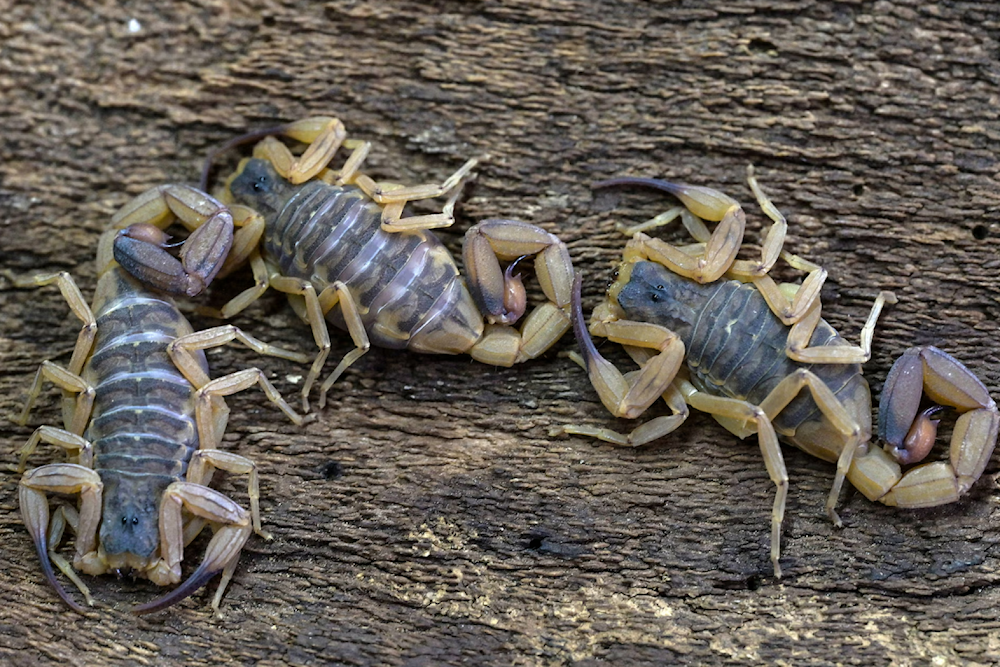Brazil: Scorpion stings surge 250% amid urban chaos, warming climate
Rapid urbanization and climate change are fueling a scorpion infestation in Brazil, turning it into a growing public health crisis with deadly consequences.
-

Scorpions thrive in urban environments such as sewers, which are warm and humid and have a ready food supply in the form of cockroaches. (Nelson Almeida/AFP)
Scorpions are "taking over" Brazilian cities, researchers warn, as rapid urbanization and climate breakdown fuel an alarming rise in sting cases. More than 1.1 million stings were reported between 2014 and 2023, with a 250% increase recorded in that period, according to data from Brazil’s notifiable diseases information system.
The research, published in Frontiers in Public Health, identifies unplanned urban growth, especially in high-density areas such as favelas, as a key driver behind the escalating crisis. Poor waste management, coupled with expanding urban sprawl, is enabling scorpions to not only survive but thrive in city environments.
According to the research, in Brazil, scorpions of the genus Tityus, notably T. serrulatus, T. bahiensis, T. stigmurus, and T. obscurus, can cause medically significant envenomation, ranging from local symptoms (pain, swelling, tingling) to minor systemic effects (nausea, tachycardia, hypertension) and severe outcomes such as cardiovascular collapse, pulmonary edema, and paralysis.
Children and the elderly are especially vulnerable to Tityus venom due to reduced resilience, and the venom’s potency demands immediate care, often including antivenom and intensive treatment. Combined with the scorpions’ adaptability and rapid reproduction, this makes them a serious public health threat in Brazil, the research found.
A 250% spike in cases across a decade
Provisional data for 2024 suggests nearly 200,000 stings have already occurred, with 133 resulting in death. Researchers project that the number of new cases could reach 2 million between 2025 and 2033. Despite these figures, experts believe the real scale is likely higher, as many individuals either self-medicate or avoid seeking medical help altogether.
According to Manuela Berto Pucca, assistant professor at São Paulo State University and lead author of the study, “Urbanisation in Brazil has profoundly reshaped ecosystems. Cities unintentionally offer everything scorpions need: plenty of shelter (in walls, drains, rubble, and construction debris), consistent warmth, and a reliable food supply in the form of cockroaches and other urban invertebrates.”
The biological advantages of scorpions, such as extended survival without nourishment and the ability to reproduce asexually, enable them to establish long-term infestations with minimal environmental needs.
Scorpions are particularly drawn to sewers, which provide year-round warmth, few natural predators, and an abundance of prey. The adaptability of some species is compounding the problem, certain scorpions can survive up to 400 days without food and reproduce without mating, making eradication efforts far more difficult.
Also, disasters like deadly violent storms in Brazil are becoming more frequent due to climate change and unchecked construction in flood and landslide-prone areas.
Researchers have linked the increase in urban scorpion populations to Brazil’s warmer, wetter climate. Previous models show that this changing climate expands the suitable habitats for scorpions, driving their migration into densely populated urban zones.
Health impact and public response
While 0.1% of reported stings result in death, vulnerable groups such as children and the elderly face higher risks. Most healthy adults recover, but may suffer for days from symptoms including pain, swelling, redness, nausea, and tingling.
“One small sting can kill a child,” warned Professor Eliane Candiani Arantes from the University of São Paulo, urging immediate medical attention for all sting victims. Brazil’s public health system offers free treatment and anti-venom at designated hospitals and emergency centers.
Dr. Pucca noted that many people do not report stings or seek treatment, particularly in low-income areas, meaning the actual number of incidents could be substantially higher than official records show.
Prevention measures and expert recommendations
Researchers emphasize the importance of prevention to reduce scorpion encounters. “Scorpions thrive in cluttered, humid environments. Keep areas clean, seal cracks in walls, use screens on drains, and always check shoes, towels and clothes before using them,” advised Pucca.
Public awareness campaigns are needed to promote behavioral changes, especially in vulnerable urban communities. Simple habits like storing clothing off the ground and sealing entry points can significantly reduce risk.
Experts reiterate the importance of not waiting for symptoms to worsen. “If someone is stung, don’t wait—go to the nearest healthcare facility immediately,” Arantes said.

 4 Min Read
4 Min Read








